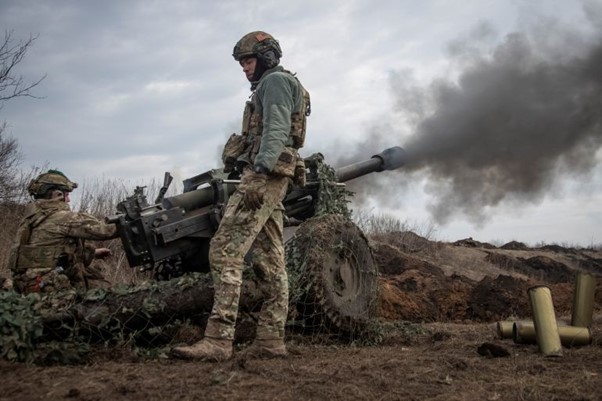
One Year Into The Russia-Ukraine Conflict: Many Questions And Few Lessons

“We will not fight a war against Russia in Ukraine. Direct conflict between NATO and Russia is World War III, something we must strive to prevent.”
President Joe Biden
Russia – Ukraine war has entered its second year, with no end in sight. The war has brought into focus numerous issues related to the emerging world order, collective security, multilateralism, economic sanctions, nuclear deterrence, food and energy security, and information warfare.
Several questions are intriguing to the strategic community and military analysts. The point of debate is whether Russia has used its full military might and has failed, as being criticised for its lack of capabilities by the West, or is it following a delicate approach towards the use of force and ensuing destruction. Notwithstanding the above, analysis of geopolitical aspects, international reactions and the conduct of military operations does bring out many relevant lessons.
Relevant Aspects of Conflict
Objectives. Officially, Russia stated her objectives of the “special military operation” as “demilitarisation, denazification and assurance about the neutral status of Ukraine (i.e.not joining NATO)”. The operations were justified by Russia, citing a call for help from the Donbas region for its liberation from Ukraine. It seems that an undeclared objective was also to consolidate the Russian hold on Crimea.
Orchestration of Operations. The operations were initiated by Russia with hybrid warfare using disruption (cyber-attacks) and destruction (using surface-to-surface and air-delivered long-range vectors). A fair amount of air superiority was achieved in the initial stages. The surface operations were three-pronged, with attacks from North, East and South. In the North, the advance was towards Kyiv and Kharkiv. In the east advances towards Donbas, Luhansk, Donetsk, and Mariupol were obviously to liberate the Donbas area and create a Russia-friendly corridor. In the south addressing Kherson, Mykolaiv, Odesa and Snake Island was to consolidate hold on Crimea and deny sea access to Ukraine.
The subsequent war can be divided into three phases:-
- Phase I: In this phase, the Russian intention was to take over the capital with swift action and bring in a regime change. Surface forces advanced towards Kyiv on two axes. The third axis was by air. Hostomel airport was taken over by Special Forces with the intention to pump in combatants, equipment and supplies. However, the helicopters and the heavy lift transport aircraft could not operate due to vulnerability from shoulder-fired anti-aircraft missiles. The attempt failed.
- Phase II: A few weeks into the war the Russian forces were reorganised and concentration shifted from the northern area to the eastern and southern areas. The operations in this phase were like urban guerrilla warfare, with Russian forces surrounding the cities and Ukrainian forces employing defensive, hit-and-run tactics. What stands out in the entire operation is that the full potential of the airpower was not utilised by the Russians. The Russian air force is ranked second, whereas, the Ukraine air force is ranked 27th in the world. Numerically Russian air force is about 8 – 10 times the size of the Ukraine air force.
- Phase III: In late September 2022, Russia held referendums in four areas of Ukraine – Donetsk, Luhansk, Kherson and Zaporizhzhia. On 30 September 2022, Russian president Vladimir Putin announced the takeover of Donetsk, Kherson, Luhansk and Zaporizhzhia, in an address to both houses of the Russian parliament. From then onwards Ukraine has been carrying out retaliatory actions, with Russia responding with punitive strikes.
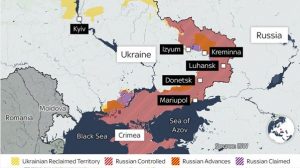
Achievement of Objectives. So far Russia has been able to create a friendly corridor in its eastern region. It has considerably reduced the Ukrainian combat potential by destroying most of its military bases and selective defence industry. Russia has consolidated its hold on Crimea. It has also ended Crimea’s water and power blockade. In addition, it has stalled the possibility of Ukraine joining NATO for the time being.
Effect on India. India has good relations with both Russia and the USA, closeness to one would be at the cost of its relationship with the other. India has to maintain its neutrality. India has defence contracts with both Russia and Ukraine. Russia has been a traditional military supplier sharing platforms and technologies that others wouldn’t. Russian hardware still accounts for approximately 60 – 70 per cent of India’s defence equipment, especially with respect to fighter jets, tanks, helicopters and submarines among others, while several major deals are in the pipeline. Ukraine also plays a vital role as a supplier to India’s military, providing crucial subsystems for Russian systems. The war has disrupted the supply chain, with an adverse effect on the serviceability and availability of defence equipment.
Security Lessons
- Nations go to War. Wars are no longer restricted to only the military domain. A whole of government approach is required to deal with the situations arising before the war, during the war and post-war. Synergy is required between various government agencies and departments.
- Collective Security. Collective security is relevant if one joins a military alliance. So far India has never joined any military alliance. Collective security also has relevance in dealing with grey zone situations using diplomatic support, intelligence sharing, cyber, and information warfare. Support can also come in the form of a supply of weapons, ammunition and spares. In the present circumstances, it is worthwhile to increase interoperability with friendly nations by carrying out exercises and developing commonality of equipment, procedures and tactics.
- Multilateralism. In modern times the effectiveness and relevance of multilateral institutions have come under question. Moreover, the shift is taking place toward flexible unilateralism, with the formation of regional issue-based alliances with a limited number of members, dealing with common issues. Engagement with these bodies needs to be issue-based.
- Self-Reliance. This lesson has got reinforced once again. Besides self-reliance in military equipment and defence production, it needs to be attained in much a larger sense, including all facets that can be used in a hostile way. The government has provided a fresh impetus to the “Atmanirbharata”, and these initiatives need to be encouraged and supported.
- Energy Security. The energy supply chain is the first casualty in any war. Both long and short-term energy security plan is essential. The issue needs to be addressed holistically by optimum utilisation of domestic resources, maintaining multiple and alternative sources for procurement, enhancing storage capability and enhancing alternative renewable energy sources.
- Nuclear Deterrence. Nuclear strategists and analysts believe that nuclear deterrence works against nuclear war. However, in this case, nuclear muscle-flexing by Russia seems to have worked in keeping US, EU or NATO from jumping into the fray directly. Another aspect is that at the time of the breakup of the USSR, Ukraine had nuclear assets that it surrendered. Russian course of action would have been different if Ukraine had retained nuclear capability. This aspect may encourage a nuclear arms race in future.
- Economic Sanctions. Economic and trade sanctions have become an effective tool of statecraft, being used extensively against unfriendly nations. History has shown that the sanctions by themselves do not deter military actions but add to the difficulty. The effect of the sanctions needs to be factored into the long-term plans.
- Out of Area Contingencies. India has its diaspora across the world. In times of disaster, these Indians need evacuation or assistance. Some contingency plans do exist, however, these plans need to be made comprehensive and reviewed periodically.
Warfare Lessons
- Clearly Defined Objectives. A clear and practical definition of objectives is very important. The clarity in political objectives helps in the formulation of achievable military objectives and orchestration of the war. An effective military strategy would flow out of these aims and objectives. Lack of clarity may result in high costs of operation or complete military failure in the worst-case scenario.
- Intangible as Important. Intangible factors like morale, training and tactics are very important for military success. Numerical strength and high-technology equipment, platforms, and weapons alone cannot win wars. Military personnel need to be well-motivated and trained in the ways of modern warfare. The strategy and tactics employed for the application of force need to be robust, aggressive and tailored to the prevailing situation.
- Information Warfare. Information warfare has become a separate domain of warfare. An appropriate narrative is essential for public opinion both worldwide and at home. An acceptable narrative also provides much-needed legitimacy for own actions. It has a direct bearing on the morale of own and enemy forces.
- Importance of Joint Warfare. Coordinated application of surface and air force is very important. The operations need to be planned and executed jointly. Joint training and joint exercises during peacetime are required, to increase interoperability between land and air forces. Joint organisational structures are required to increase the synergy. Joint theatre commands are one way of achieving it, but not the only way. The structural reorganisation should be done keeping in mind the factors like existing threats, availability of resources, economic strength, and the prevailing geopolitical situation. The restructuring should be able to deal with changing ways and new domains of warfare in future.
- Importance of ISR and Information Sharing. In modern warfare, a high degree of situational awareness is of utmost importance. Multi-domain surveillance and reconnaissance capabilities are required. AI-enabled hybrid systems are essential for processing the plethora of gathered data. A network environment is also required for the speedy dissemination of raw and processed data on a need-to-know basis.
Lessons Specific to Airpower Application
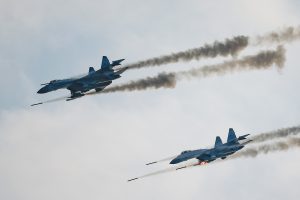
- Unrestricted Application of Airpower. Applying airpower with restrictions is like fighting with one hand tied behind the back and it increases the cost (in terms of men, material, money and time) of achievement of objectives. Unrestricted, effect-based, and offensive application of airpower yields faster results due to the shock and awe effect that it creates.
- Efficacy of No-Fly Zone. The declaration of a no-fly zone is one of the tools in air warfare. However, it is viable and effective only if it is backed up by the wherewithal and willingness to implement it. It needs monitoring equipment, weapon systems and networks for implementation. Willingness to use them and readiness for resulting escalation are other two important factors for their effectiveness.
- Ability to Hit from Far with Accuracy. Stand-off and precision capabilities are important in grey zone operations, punitive strikes, and operations in urban areas, to avoid threats to the launch platform and avoid collateral damage.
- Vulnerability of Platforms in Contested Airspace. Platforms like helicopters, fixed-wing transport aircraft and drones are highly vulnerable in contested airspace. Airborne operations (using fixed-wing and/or helicopters) yield quick results, speeding up the achievement of military objectives. However, with the proliferation of shoulder-fired anti-aircraft missiles, the vulnerability of these platforms has increased manifold. These weapons can cause a prohibitively high cost to airborne operations, especially in urban and hilly areas.
- Integrated Air Campaigns: Offensive and Defensive. Airpower is inherently offensive in nature. Even the concept of air defence is offensive with the philosophy of active defence. The offensive and defensive air campaigns are enmeshed with each other and cannot be separated.
- Protection of Air Assets. Protection of own high-value assets from the enemy’s aerial attack with long-range vectors/standoff weapons is essential, especially during the opening phases of the war. Protective shelters are essential and they should be able to withstand the destructive power of enemy weapons. Hypersonic weapons have enhanced destructive power due to high kinetic energy. Dispersal of the assets, using the principle of not keeping all the eggs in one basket, would increase the enemy’s effort and cost.
Unanswered Questions
A few questions that remain unanswered are, is this war really between Russia and Ukraine or between the West and the Eastern bloc? Is Russia preserving its modern next-gen equipment for a stronger enemy? Are two sides looking for an honourable exit? The world is waiting and watching as to how and when will this conflict end.
**********************************************************************************************************************
References
- https://www.wionews.com/photos/in-long-air-battle-can-ukraine-hold-out-against-russian-air-force-459873#ukraine-air-force-459857
- https://www.reuters.com/world/europe/what-happened-russias-air-force-us-officials-experts-stumped-2022-03-01/
- https://rusi.org/explore-our-research/publications/commentary/mysterious-case-missing-russian-air-force
- https://www.nytimes.com/2022/03/13/world/europe/russian-airstrike-poland-ukraine-nato.html
- https://warontherocks.com/understanding-the-russo-ukrainian-war-a-guide-from-war-on-the-rocks/
- https://warontherocks.com/2022/03/the-dangerous-allure-of-the-no-fly-zone/
- https://www.vifindia.org/article/2022/march/09/russo-ukraine-war-air-power-analysis
- https://warontherocks.com/episode/warcast/26495/russian-air-force-on-the-sidelines-for-now/
- https://www.militarytimes.com/flashpoints/ukraine/2022/03/03/ukraine-receives-more-armed-drones-amid-russian-invasion/
- https://www.npr.org/2022/05/11/1098150747/a-big-mystery-of-the-war-in-ukraine-is-russias-failure-to-gain-control-of-the-sk
- https://www.aerosociety.com/news/air-war-over-ukraine-the-first-days/
- https://chanakyaforum.com/air-power-in-ukraine-conflict/
- https://www.indiatoday.in/news-analysis/story/mapping-the-russian-assault-on-ukraine-s-airpower-1917856-2022-02-25
- https://www.aljazeera.com/news/2022/3/2/why-hasnt-russia-mobilised-its-vast-air-power-against-ukraine
- https://www.19fortyfive.com/2022/05/russia-air-force-problems-ukraine/
Disclaimer
The opinions expressed in this article are the author’s own and do not reflect the views of Chanakya Forum. All information provided in this article including timeliness, completeness, accuracy, suitability or validity of information referenced therein, is the sole responsibility of the author. www.chanakyaforum.com does not assume any responsibility for the same.
Chanakya Forum is now on . Click here to join our channel (@ChanakyaForum) and stay updated with the latest headlines and articles.
Important
We work round the clock to bring you the finest articles and updates from around the world. There is a team that works tirelessly to ensure that you have a seamless reading experience. But all this costs money. Please support us so that we keep doing what we do best. Happy Reading
Support Us



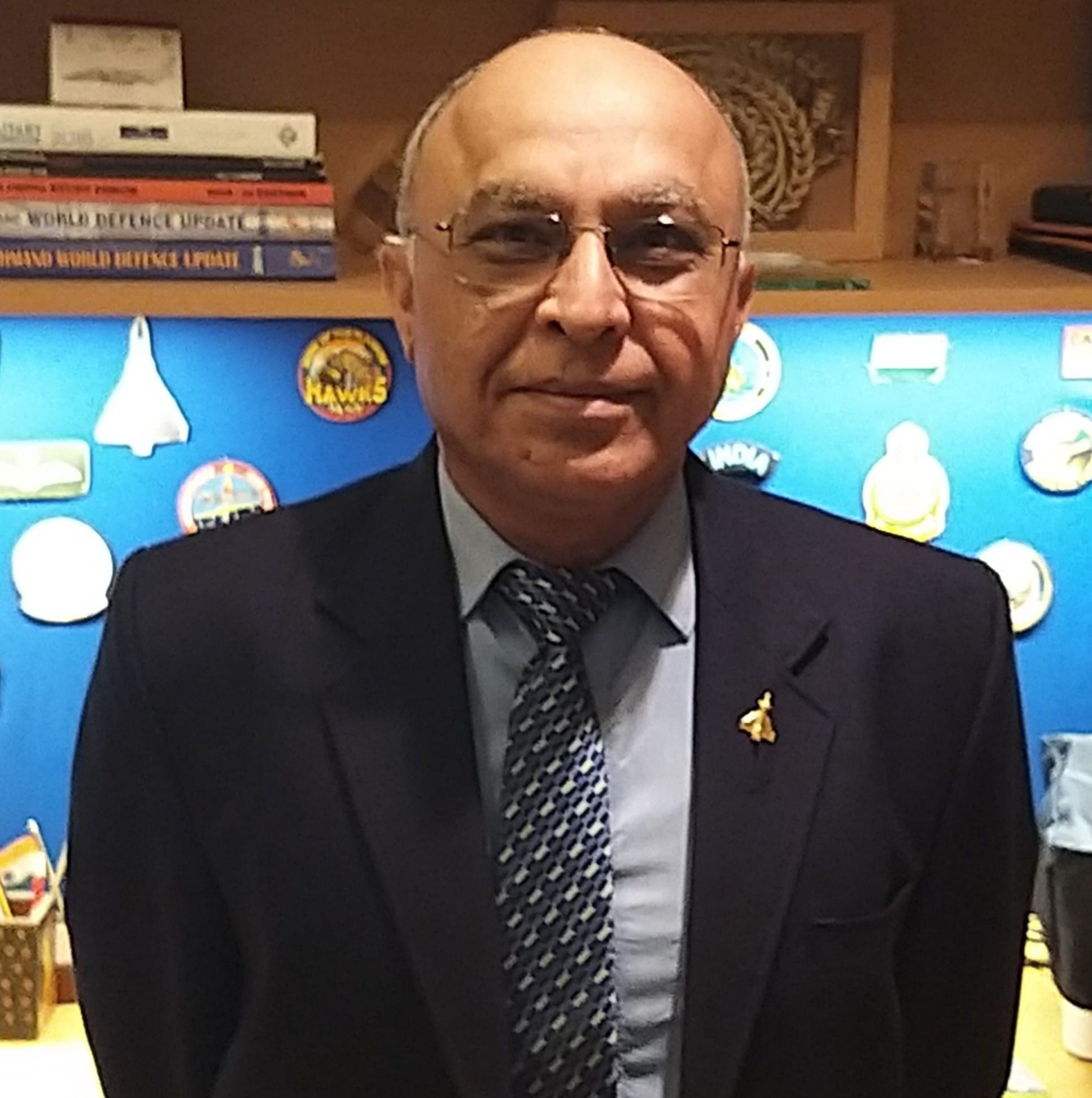

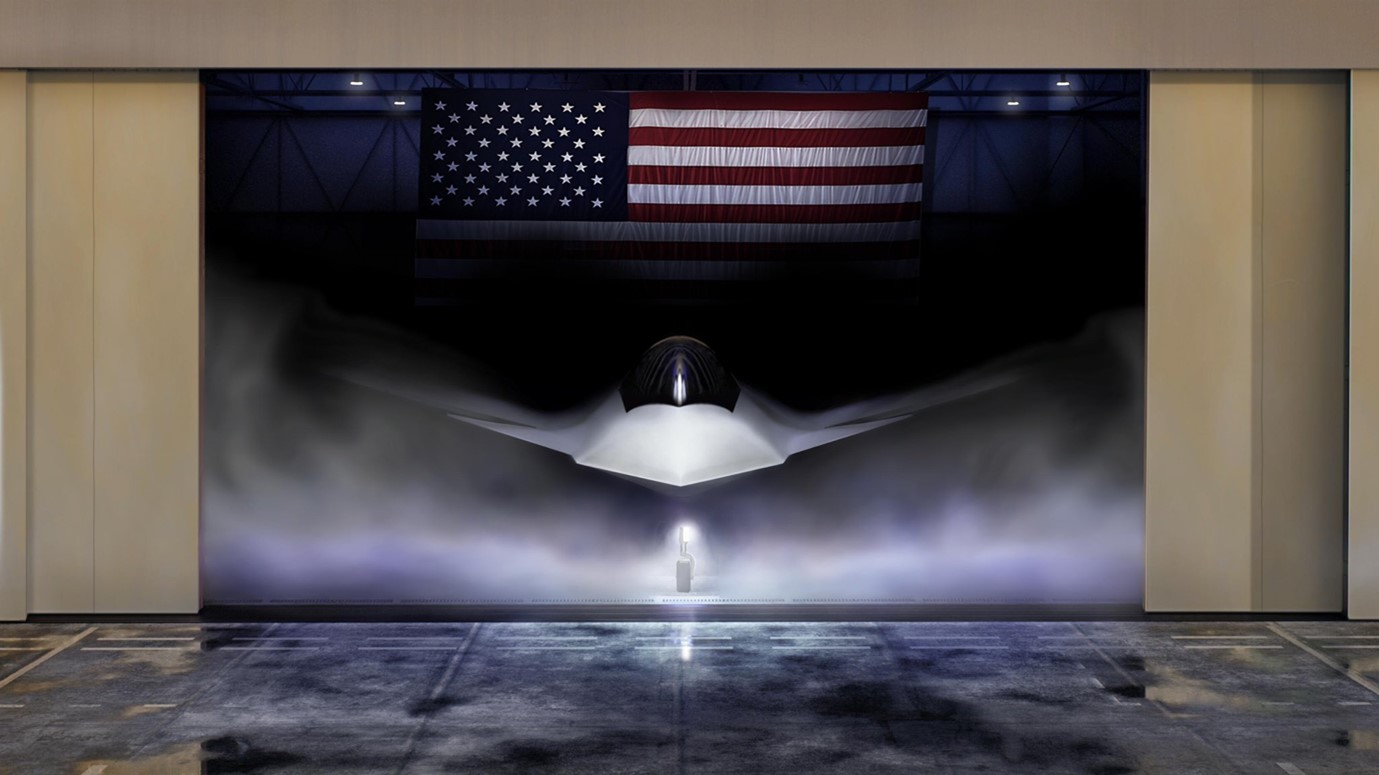









POST COMMENTS (1)
Kalidan Singh